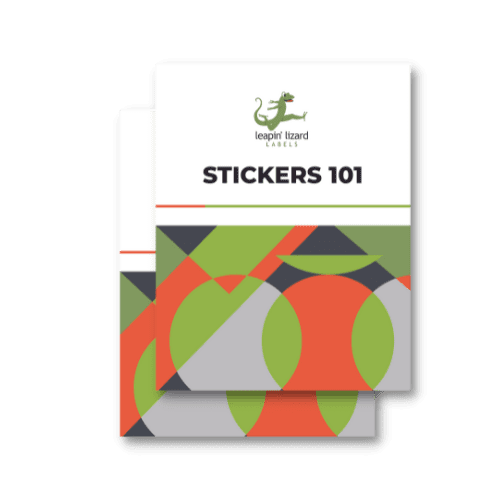How to Design Labels That Meet New FDA/FSMA Requirements
Meta Description: Stay compliant and consumer-friendly with this guide to designing product labels that meet updated FDA and FSMA requirements. Learn best practices and how Leapin’ Lizard Labels can help.
Introduction
In today’s competitive and regulated market, designing a product label isn’t just about branding—it’s about compliance, clarity, and consumer safety. With the FDA (Food and Drug Administration) and FSMA (Food Safety Modernization Act) enforcing stricter labeling rules, it’s essential for brands in the food, beverage, supplement, and cosmetic sectors to stay current and compliant.
But where do you start?
This guide walks you through the latest FDA and FSMA labeling requirements, common pitfalls to avoid, and best practices for designing labels that are both compliant and captivating. Whether you’re a startup in a shared kitchen or a growing CPG brand, understanding these standards will keep your products on shelves and out of regulatory hot water.
Section 1: Why FDA/FSMA Compliance Matters
Labeling is one of the most visible ways consumers interact with your product—but it’s also a legally regulated space. Failure to comply with labeling standards can result in:
- Product recalls
- Fines and penalties
- Damaged brand reputation
- Lawsuits or FDA warning letters
- Removal from store shelves or e-commerce platforms
The FSMA shifted focus from responding to contamination to preventing it. This includes traceability requirements and ensuring the labeling clearly communicates allergens, nutrition facts, and product claims. The FDA enforces these through various labeling guidelines, depending on product type.
Section 2: Core FDA Labeling Requirements (as of 2025)
1. Statement of Identity (Product Name)
- Must be prominent on the Principal Display Panel (PDP).
- Clearly indicate the nature of the product, e.g., “Sparkling Water with Lime” or “All-Natural Facial Cleanser.”
2. Net Quantity of Contents
- Expressed in both metric and U.S. customary units (e.g., “12 fl oz (355 mL)”).
- Must appear within the bottom 30% of the PDP.
3. Nutrition Facts Panel
- Mandatory for food and beverage products (unless exempt).
- The 2020 FDA Nutrition Facts Label format must be followed.
- Includes updates to serving sizes, added sugars, vitamin D, and potassium requirements.
4. Ingredients List
- Ingredients listed in descending order by weight.
- All FDA-defined major allergens (milk, eggs, peanuts, tree nuts, fish, shellfish, soy, wheat, and sesame as of 2023) must be clearly stated.
5. Manufacturer, Packer, or Distributor Info
- Must include name, city, state, and ZIP code.
- A phone number or website is optional but recommended for transparency.
6. Allergen Statements
- Must include plain-language identification (e.g., “Contains: Milk, Eggs”).
- If cross-contamination is a risk, precautionary statements like “May contain traces of peanuts” may be used, though they are not FDA-required.
7. Claims
- “Organic,” “Non-GMO,” “Gluten-Free,” and health claims (like “Heart Healthy”) must be backed by regulatory standards or substantiated documentation.
- Misleading or unapproved claims can lead to immediate action by the FDA.
Section 3: New FSMA Rules Impacting Label Design
1. Food Traceability Rule (Effective 2026)
Under FSMA’s Section 204(d), certain high-risk foods require enhanced traceability records. While not always affecting consumer-facing labels, this regulation is influencing lot coding, batch information, and scannable traceability barcodes.
2. Preventive Controls for Human Food
Labeling must ensure accurate allergen information, especially for co-manufactured products. FSMA stresses cross-contact prevention, which may lead to more detailed allergen disclosures.
3. Foreign Supplier Verification Program (FSVP)
If you’re using international ingredients, you must verify that those suppliers follow FDA safety and labeling standards. Mislabeling imported products is a common FSMA violation.
Section 4: Common Labeling Mistakes to Avoid
- Font Too Small
FDA requires a minimum 1/16” font height for most content. Anything smaller is unreadable and noncompliant. - Inaccurate Serving Sizes
Must reflect actual consumption habits, not arbitrary servings. - Unapproved Health Claims
Saying “cures,” “treats,” or “heals” can reclassify your product as a drug unless you’re FDA-approved. - Misuse of “Natural” or “Organic”
“Natural” isn’t FDA-defined—avoid misleading use. “Organic” must follow USDA certification protocols. - Improper Allergen Declaration
Allergen callouts must match FDA formatting rules—no shorthand or burying allergens in long ingredient lists.
Section 5: Designing Labels That Are Both Compliant and Appealing
1. Know Your Panel Layouts
- PDP (Principal Display Panel): Holds your product name and net quantity.
- Information Panel: Usually to the right of the PDP, includes nutrition, ingredients, and manufacturer info.
2. Use Hierarchy Wisely
Keep the most critical consumer info readable and accessible. Bold the product name, use smart spacing, and ensure claims don’t crowd out mandatory content.
3. Typography and Contrast
Use legible fonts with good contrast. Avoid reverse type on dark backgrounds unless the font is large and bold.
4. Include Digital-Ready Features
QR codes, batch tracking, and smart labels are becoming standard in FSMA traceability compliance.
5. Leave Room for Lot Codes or Stamping
Leave unprinted white space or matte finish areas for date coding or batch stamping required by FSMA traceability rules.
Section 6: Industry-Specific Label Considerations
Food & Beverage
- Must include a Nutrition Facts Panel unless exempted (e.g., some small producers).
- Allergen callouts are mandatory.
- Watch out for sugar and sodium content if making health claims.
Dietary Supplements
- Must use Supplement Facts, not Nutrition Facts.
- Must disclose active and inactive ingredients, plus cautionary statements for certain demographics (e.g., pregnant individuals).
Cosmetics & Skincare
- Ingredient list and net weight must be included.
- Claims like “hypoallergenic” or “dermatologist tested” are not regulated, but must be truthful.
- FDA expects transparency around preservatives and fragrances.
Section 7: Working with Leapin’ Lizard Labels to Stay Compliant
Navigating FDA and FSMA regulations is complex—but you don’t have to do it alone.
At Leapin’ Lizard Labels, we specialize in helping brands create stunning labels that check all the regulatory boxes. Our experienced team knows how to:
- Interpret FDA and FSMA rules for your specific industry
- Format Nutrition and Supplement Facts Panels correctly
- Ensure allergen labeling is compliant and legible
- Advise on label material durability for required printing or stamping
- Help you prep for digital batch coding or traceability initiatives
- Review designs for layout consistency across single items or product families
We also offer small-batch runs with same-day printing or 3–5 day turnarounds for fast label updates or new SKU launches.
Need help redesigning your packaging after a regulation change? Want a second set of eyes on your label before launch? We’ve got your back—from first concept to final print. Contact our team to get started today!
Section 8: Final Thoughts
Designing a label that’s both eye-catching and FDA/FSMA compliant is a delicate balance—but it’s one worth mastering. Your label is more than just a brand touchpoint—it’s your legal protection, your customer’s assurance, and your chance to build trust.
By following the best practices in this guide—and working with a knowledgeable partner like Leapin’ Lizard Labels—you can ensure that your labels don’t just look good on the shelf, they stand up to regulatory scrutiny as well.
Frequently Asked Questions
Q: Do I need to include a Nutrition Facts panel if I’m selling homemade food at a farmer’s market?
A: It depends. Small businesses that sell directly to consumers (like at farmers markets) may be exempt, but once you distribute through retail or online, labeling requirements increase. Always check with your local state and FDA guidelines.
Q: What happens if I list an allergen incorrectly or omit it?
A: This can result in product recalls or FDA action. Accurate allergen labeling is one of the most enforced labeling rules under FSMA.
Q: Can I say my product is “all-natural”?
A: The FDA has not formally defined “natural,” but it must not be misleading. Avoid implying that your product is organic or free from synthetic ingredients unless you can prove it.
Q: What’s the difference between Nutrition Facts and Supplement Facts?
A: Foods and beverages use Nutrition Facts, while dietary supplements require Supplement Facts. The formatting and required disclosures differ—using the wrong one can lead to penalties.
Q: Can Leapin’ Lizard Labels help with prepress compliance checks?
A: Absolutely. Our team frequently reviews labels for FDA and FSMA compliance and can help identify missing content, formatting errors, or risk areas before print.


